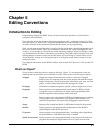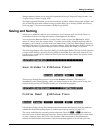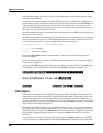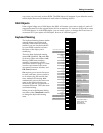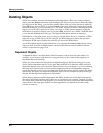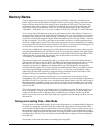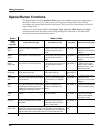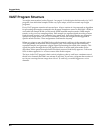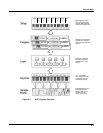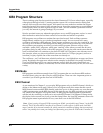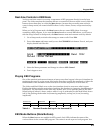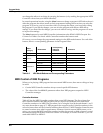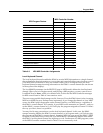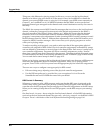
Program Mode
6-1
Chapter 6
Program Mode
Programs are the K2661’s performance-level sound objects. They’re preset sounds equivalent to
the patches, presets, voices, or multis that you find on other synths.
Program mode is the heart of the K2661, where you select programs for performance and
editing. The K2661 is packed with great sounds, but it’s also a synthesizer of truly amazing
depth and flexibility. When you’re ready to start tweaking sounds, the Program Editor is the
place to start. But first there’s a bit more general information about Program mode. For complete
information on the K2661’s Program Editor, refer to Chapter 6 of the K2661 Musician’s Guide (on
the CD-ROM).
In Chapter 2 we briefly discussed the difference between VAST programs and KB3 programs.
You’ll remember that VAST programs contain up to 32 layers, each of which contains a keymap,
which in turn consists of a number of samples assigned to a particular keyboard range—
typically five or six notes, depending on the samples.
We mentioned drum programs, which are VAST programs with more than three layers. There’s
no real difference between “normal” VAST programs and drum programs—consequently this
chapter doesn’t make any further distinctions between them. There are also Triple Mode
programs, where three layers of DSP information are used for one massive DSP chain.
OK, one further distinction: there’s no keymap information about drum programs in the info
box on the Program-mode page—there simply isn’t room for information about more than three
layers. If you’re wondering why we even have the concept of a drum program, it’s actually a
carryover from the K2000, which had less processing power than the K2661, and required a
special channel to handle more than three layers—and you need lots of layers, each with a
different sound and keyboard range, to make a convincing drum program. The name stuck.
You’ll also recall from Chapter 2 that KB3 programs use a much different architecture: no layers
or algorithms, just a bunch of oscillators that start running as soon as you select a KB3 program.
This keeps the K2661’s sound engine rather busy, and that’s why there’s a special channel
dedicated to KB3 programs; “regular” channels don’t have the processing ability to generate
that many voices on a constant basis. By default, Channel 1 is the KB3 channel, but you can
make any channel the KB3 channel (with the KB3Chan parameter on the Master-mode page).
The next two sections give more detailed descriptions of the differences in structure between
VAST programs and KB3 programs. Then, since there are several performance features (and a
few issues) unique to KB3 programs, we’ll talk about those (KB3 Mode on page 6-4). After that,
there are descriptions of the Program-mode features that are common to both types of
programs.



